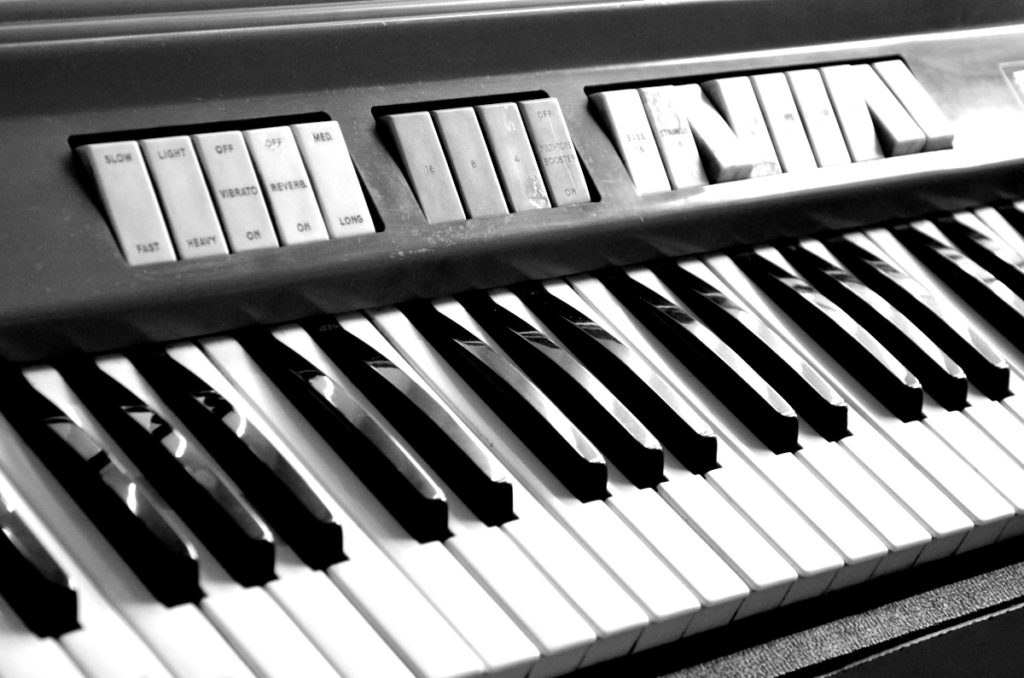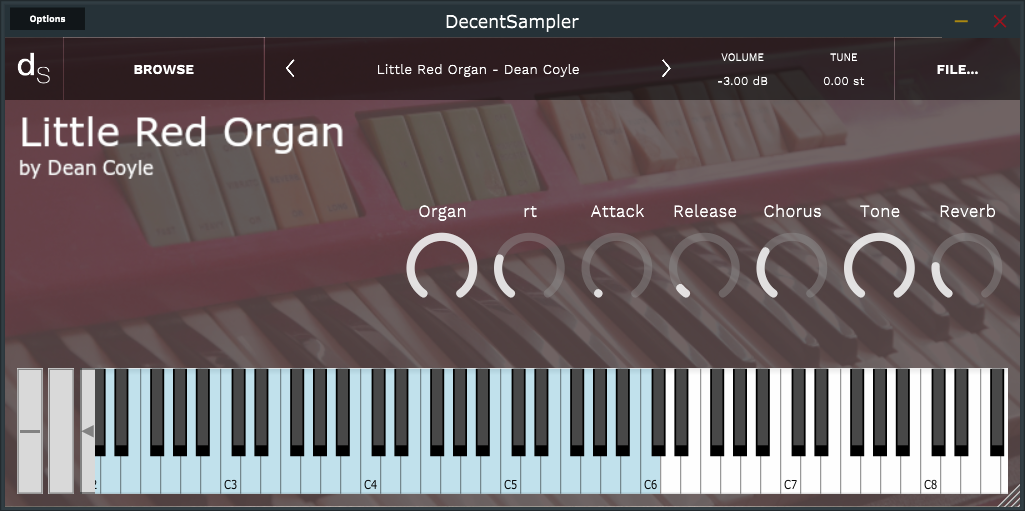
The story
This is my first sample instrument, so I wanted to create something simple and light.
I have used short samples and looped them to create a sample instrument that is under 6Mb.
The organ has one set of samples, and a second set of key noises. These can be blended to create a desired noise.
Controls for Tone, Reverb and Chorus allows the organ to create a range of sounds.
The organ still required lots of work, such a recapping and tolex replacing. This organ was toured heavily in the 60s and this I reflected in its condition and collection of scars.
How I created this instrument.
Demo
Interface

Reviews for Little Red Organ
- Sound
- Character
- Playability
- Inspiration
- GUI
Leave a review to let others know what you thought of the instrument!
Packs quite a punch
Little organ, big sound.
Farfisa for Life
Wonderful instrument, nicely configurable. Great job!
Not little at all!
The only little thing about this organ is the size of the files! You will definitely be impressed by the deep and warm sound signature of this "little" organ for sure. It's synthy but mellow, and it also has release triggers that can be fully controlled by the minimal yet pleasing-looking GUI. Inside you will also find handy Attack and Release knobs, a Chorus knob, LPF, and a Reverb that makes the sound even better in my opinion.
The note-by-note sampling and the 4 total octaves of range makes it kind of unbelievable that in total it is just 10 megabytes in size. Simply incredible!
A good first pack
For a first sample instrument, the result is very good. It is possible to get a wide variety of sounds with all the controls included in the pack, from a cinematic organ to a beautiful pad. The interface is simple, but beautiful. I consider the dimensions and position of the controls to be adequate. Overall, it's a great first pack.
Very nice organ sound
I just got the Little Black EP and I wanted to try the other instrument from Dean. Again, I really love the sound of this organ, that is different from what I use usually. Thanks a lot for this!





